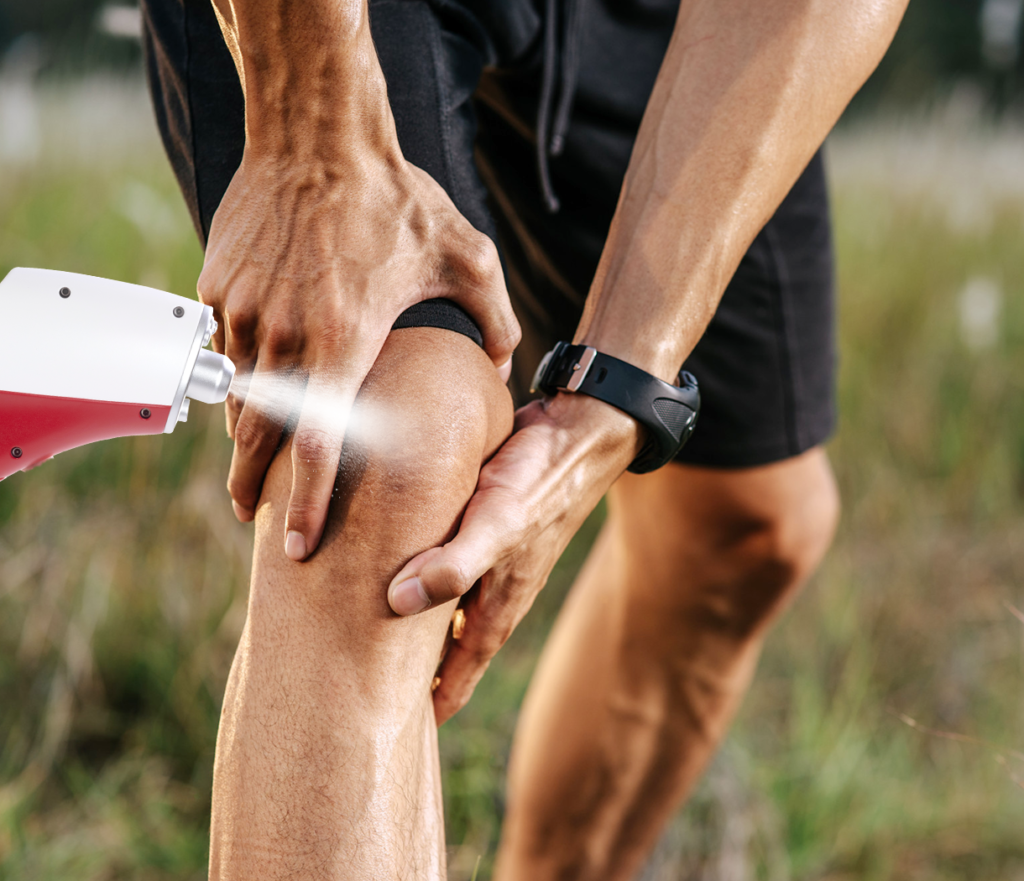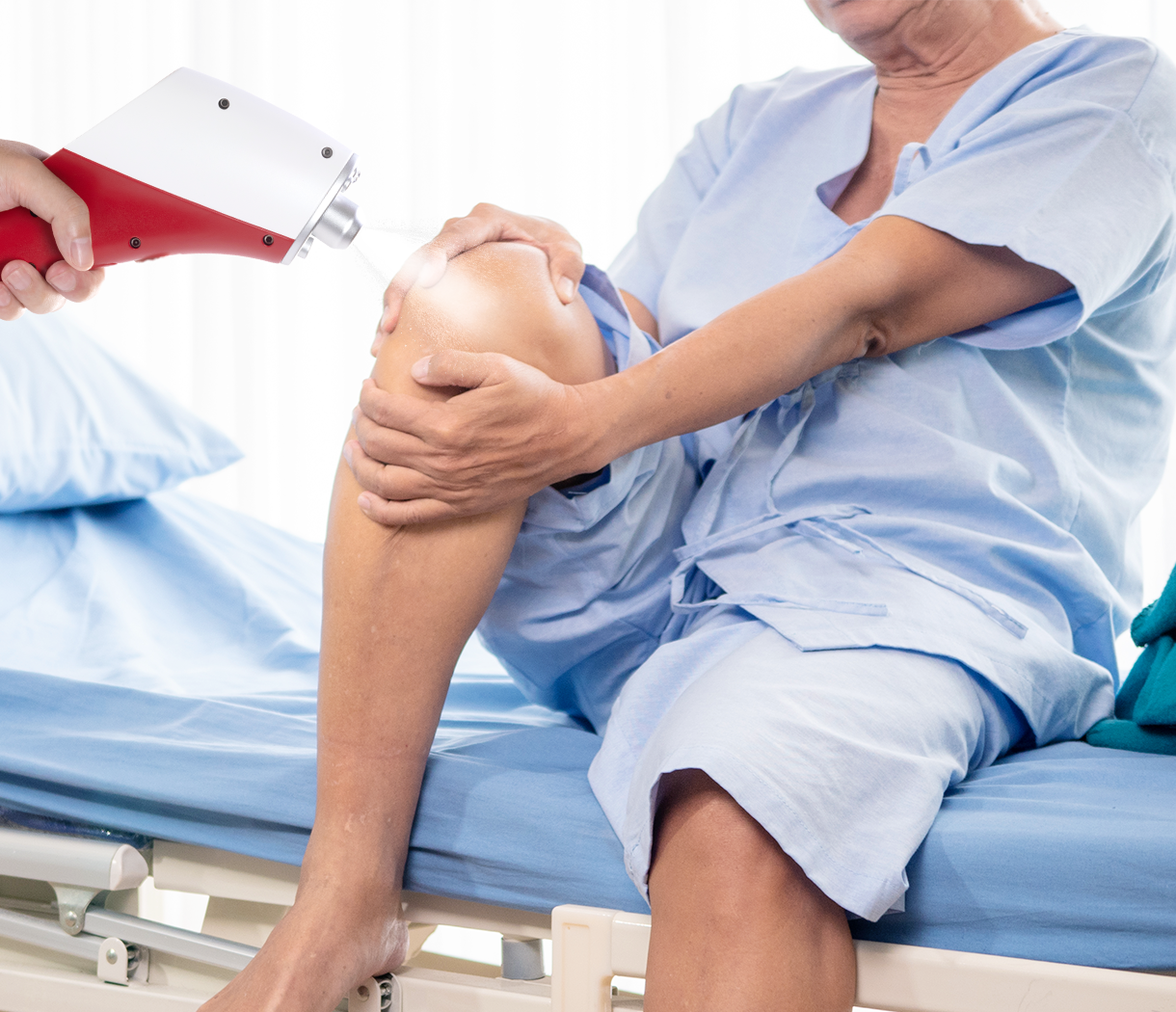Introduction: Revolutionizing Orthopedic Recovery
Orthopedic injuries are common, affecting athletes and older adults alike. Traditional rehabilitation often requires long recovery times and may cause medication side effects. CO₂ cryothérapie offers a non-invasive alternative that uses controlled cold exposure to accelerate healing in ligaments, tendons, and joints. By targeting inflammation and promoting tissue regeneration, it helps relieve pain and restore mobility more efficiently. This innovative therapy is transforming orthopedic recovery, providing faster, safer, and more effective outcomes for patients seeking improved musculoskeletal health.
What Orthopedic Injuries Mean for Daily Life
Orthopedic injuries make daily activities difficult and painful.
Limited mobility affects confidence and emotional wellbeing.
Persistent pain causes frustration and social withdrawal.
Recovery delays reduce work productivity and increase costs.
Chronic pain may lead to long-term disability or dependence.
Compensatory movements create new injuries and imbalances.
Common Challenges in Ligament, Tendon, and Joint Healing
Poor blood supply slows ligament and tendon repair.
Inflammation persists, delaying full tissue recovery.
Early movement risks re-injury and chronic instability.
Joint healing is complex due to multiple tissue types.
Ongoing inflammation may accelerate joint degeneration.
Scar tissue limits flexibility and range of motion.
Conventional treatments often fail to address all factors.
Comprendre la cryothérapie au CO₂
Before exploring specific applications in orthopedic medicine, establishing a foundational understanding of CO₂ cryotherapy technology and its physiological mechanisms proves essential. This therapeutic approach differs significantly from traditional ice pack application or whole-body cryotherapy chambers. The precision and controlled nature of CO₂ cryotherapy allows for targeted treatment of specific anatomical structures while minimizing exposure to surrounding tissues. This section examines the scientific principles underlying this treatment modality and explains how carbon dioxide achieves therapeutic cold temperatures.
What Is CO₂ Cryotherapy? Mechanism and Science
Utilisations de la cryothérapie CO₂ dioxyde de carbone sous pression released through a medical applicator to deliver rapid, localized cold therapy. When the gas expands, it cools instantly to about -78°C (-108°F) via the Joule-Thomson effect, producing an intense yet controlled thermal shock. Each treatment typically lasts 10–15 seconds per site, enabling clinicians to target specific muscles, joints, or soft tissue areas with precision. The cold exposure triggers immediate vasoconstriction, reducing inflammation and swelling. Once the cold stimulus ends, reactive vasodilation follows, greatly enhancing circulation and nutrient delivery. This vascular “exercise” boosts tissue oxygenation and promotes faster recovery. Additionally, extreme cooling interrupts pain transmission along sensory nerves through cryoanalgesia, providing instant relief. The process also stimulates cellular repair responses, accelerating healing and restoring function in ligaments, tendons, and joints.
How CO₂ Gas Targets Inflammation and Pain
Inflammation is essential for healing, but excessive or prolonged inflammatory activity can hinder recovery. CO₂ cryotherapy helps modulate this process by rapidly lowering tissue temperature, reducing metabolic demand, and suppressing pro-inflammatory cytokines such as interleukin-1β and TNF-α. This response limits swelling, decreases capillary permeability, and enhances lymphatic drainage, preventing fluid buildup. The treatment’s analgesic effects operate through several mechanisms: it slows nerve conduction velocity, temporarily blocking pain signals to the brain, while stimulating the release of natural endorphins that enhance comfort and relaxation. Additionally, CO₂ cooling alleviates muscle spasms and reduces tension in surrounding tissues, addressing both primary and secondary pain sources. By managing inflammation and pain simultaneously, CO₂ cryotherapy creates an optimal environment for faster, more complete orthopedic recovery.
How CO₂ Cryotherapy Supports Ligament Healing
Ligament injuries range from minor sprains to complete ruptures and represent some of the most common orthopedic conditions affecting both athletic and general populations. The anterior cruciate ligament (ACL), medial collateral ligament (MCL), and various ankle ligaments frequently sustain damage during sports activities or traumatic events. Traditional management has relied heavily on rest, immobilization, and gradual rehabilitation protocols. However, these approaches often result in prolonged recovery periods and may not fully restore pre-injury function. CO₂ cryotherapy offers targeted support for ligament healing by addressing the specific biological challenges these tissues face during recovery.
Stimulating Collagen Production for Ligament Recovery
Collagen is the key structural protein that gives ligaments strength and stability. During recovery, new collagen fibers must form and align properly to restore joint function. CO₂ cryotherapy stimulates fibroblast activity—the cells responsible for collagen synthesis—through controlled cold-induced stress that enhances cellular repair. This stimulation accelerates the proliferative phase of healing, when tissue formation is most active. The process also promotes correct collagen alignment, improving the biomechanical quality of repaired ligaments. Cold exposure activates heat shock proteins and other stress-response pathways that enhance tissue resilience and reduce scar formation. Research shows well-organized collagen fibers possess greater tensile strength than irregular scar tissue. By supporting efficient collagen production and alignment, CO₂ cryotherapy helps ligaments recover with superior strength and flexibility, allowing faster and safer return to physical activity or sport.
Reducing Post-Injury Swelling and Inflammation
Acute ligament injuries often trigger excessive swelling that restricts blood flow and delays recovery. While some inflammation initiates healing, too much edema increases pain and pressure on surrounding tissues. CO₂ cryotherapy rapidly reduces swelling by causing immediate vasoconstriction, which limits fluid leakage from capillaries. This response helps prevent tissue congestion and secondary ischemia. The therapy also enhances lymphatic drainage, accelerating the removal of inflammatory fluids and cellular waste that can prolong healing. In ligaments, where natural drainage is limited, this effect is especially beneficial. Controlling inflammation early allows patients to begin gentle rehabilitation sooner, minimizing muscle atrophy and joint stiffness. Reduced swelling also decreases the risk of scar tissue and adhesions that can impair mobility. Overall, CO₂ cryotherapy provides a powerful, non-invasive strategy for managing post-injury inflammation and restoring function more efficiently.
Enhancing Blood Flow for Faster Ligament Recovery
Limited blood supply is a major barrier to ligament healing, restricting oxygen and nutrient delivery to injured tissues. CO₂ cryotherapy counteracts this by inducing reactive hyperemia—an increase in blood flow that occurs after cold exposure. Following treatment, circulation to the area can rise by up to 300%, providing vital nutrients and removing waste products. This improved perfusion accelerates cellular repair and regeneration. Regular sessions may also stimulate angiogenesis, promoting new blood vessel formation that strengthens tissue health long-term. Enhanced circulation supports immune function, helping clear debris and prevent infection. The alternating cycle of vasoconstriction and vasodilation acts as a vascular workout, improving vessel elasticity and recovery efficiency. Through these mechanisms, CO₂ cryotherapy optimizes the biological environment for ligament repair, enabling faster recovery and improved structural resilience.
Case Examples: Common Ligament Injuries Treated
Ankle sprains, particularly those involving the anterior talofibular ligament, respond well to CO₂ cryotherapy, with patients experiencing faster pain reduction and improved mobility. Daily treatments during the acute phase, followed by alternate-day sessions, can shorten recovery by up to 40% compared to standard care. The precision of CO₂ delivery allows targeted treatment without affecting surrounding tissue. Knee ligament injuries, such as MCL sprains and partial ACL tears, also benefit from this approach, especially in non-surgical management. Post-surgical protocols increasingly integrate CO₂ cryotherapy to control inflammation and enhance healing. During the critical first weeks after injury, the therapy helps manage swelling and pain, improving long-term outcomes. Its brief application time, immediate relief, and safety profile make CO₂ cryotherapy a highly effective and well-tolerated component of ligament rehabilitation programs.
CO₂ Cryotherapy for Tendon Recovery
Tendon disorders including tendinitis, tendinosis, and partial tears present particularly challenging management scenarios due to the poor healing capacity of these structures. Unlike acute ligament injuries, tendon conditions often develop gradually through repetitive microtrauma and may become chronic if not appropriately addressed. Common sites include the Achilles tendon, rotator cuff tendons, patellar tendon, and elbow tendons affected by lateral epicondylitis (tennis elbow). Traditional approaches emphasizing rest and eccentric strengthening exercises provide benefit but often require months to achieve meaningful improvement. CO₂ cryotherapy offers an adjunctive treatment that addresses multiple aspects of tendon pathology simultaneously.
Accelerating Healing in Tendonitis and Tendon Tears
Tendon injuries such as tendinitis and tendinosis impair strength and flexibility, often causing chronic pain and limited mobility. CO₂ cryotherapy addresses both inflammatory and degenerative tendon conditions through temperature-controlled cellular stimulation. The rapid cold exposure reduces pro-inflammatory mediators in acute tendinitis while enhancing tenocyte metabolism in degenerative tendinosis. This promotes synthesis of new collagen and extracellular matrix, essential for restoring tendon integrity. In partial tendon tears, CO₂ cryotherapy offers pain control that allows safe, modified activity, preventing stiffness and muscle atrophy from immobilization. It also reduces excessive scar formation that can alter tendon mechanics. By optimizing the healing environment, cryotherapy may decrease the need for surgical intervention. Typical treatment protocols involve two to three sessions weekly, adjusted based on symptom improvement and clinical evaluation, providing faster, safer, and more complete recovery outcomes.
Pain Relief Mechanisms Without Medication
Chronic tendon pain often resists standard medication-based treatments, prompting the need for effective non-pharmacological alternatives. CO₂ cryotherapy provides powerful analgesia through neurological and biochemical pathways without drug dependence. The intense cold slows nerve conduction velocity, temporarily blocking pain signal transmission—a process known as cryoanalgesia. Relief begins immediately and can persist for hours after treatment. Cryotherapy also reduces pain indirectly by limiting inflammation, controlling edema, and alleviating muscle spasm, thereby removing both chemical and mechanical pain triggers. Additionally, it stimulates the release of natural endorphins that enhance comfort and mood. These combined effects allow patients to tolerate rehabilitation exercises more effectively, accelerating recovery while reducing reliance on pain medications. For individuals with contraindications to anti-inflammatory drugs, CO₂ cryotherapy offers a safe, evidence-based method for achieving meaningful pain control and improved functional performance.
Improving Tendon Elasticity and Strength Post-Injury
Effective tendon recovery requires restoration of both structural integrity and elasticity, which are essential for optimal movement efficiency. CO₂ cryotherapy enhances these properties by promoting organized collagen fiber alignment and balanced cross-linking between collagen and elastin molecules. The treatment’s vascular effects increase blood flow, delivering oxygen and nutrients necessary for tissue remodeling and improved mechanical strength. Enhanced circulation also supports metabolic waste removal, optimizing cellular repair. As remodeling progresses, tendon elasticity and tensile strength increase, enabling gradual reloading through rehabilitation exercises. Patients often report greater confidence and reduced re-injury risk as functional strength returns. When combined with progressive loading and physiotherapy, CO₂ cryotherapy accelerates tissue adaptation, helping restore full biomechanical performance. This integrated approach reduces recovery time and improves overall tendon resilience, making it a valuable adjunct in modern musculoskeletal rehabilitation.
Benefits for Joint Recovery and Function
Joint disorders encompass a wide spectrum of conditions from acute traumatic injuries to chronic degenerative diseases. Osteoarthritis affects millions globally, creating pain, stiffness, and progressive functional decline. Post-surgical recovery following procedures such as arthroscopy, joint replacement, or cartilage repair requires careful management to optimize outcomes. CO₂ cryotherapy addresses multiple aspects of joint pathology and recovery, making it applicable across diverse clinical scenarios. The treatment’s ability to reduce intra-articular inflammation, manage pain, and support tissue healing provides comprehensive benefits for joint health restoration and maintenance.

Relieving Arthritis-Related Pain and Stiffness
Osteoarthritis causes cartilage degeneration, synovial inflammation, and structural changes that result in chronic pain and stiffness. CO₂ cryotherapy alleviates these symptoms by lowering intra-articular inflammation and reducing cytokine activity in the synovial membrane. The cold exposure limits cartilage-damaging enzymes and slows disease progression. Cryotherapy also decreases muscle guarding and capsular tightness, improving flexibility and range of motion. Patients frequently report easier movement and less pain for days or weeks following treatment. The therapy is particularly effective for weight-bearing joints such as the knees and hips, where pain most restricts activity. Regular sessions can reduce dependence on anti-inflammatory medications, minimizing potential gastrointestinal or cardiovascular side effects. When combined with exercise, weight management, and comprehensive arthritis care, CO₂ cryotherapy provides a safe, non-pharmacologic method for improving mobility and quality of life in patients with degenerative joint conditions.
Supporting Post-Surgical Joint Healing
Joint surgery—from arthroscopy to total replacement—creates inflammation, swelling, and pain that can delay rehabilitation. Early application of CO₂ cryotherapy effectively controls these responses, allowing faster recovery and reduced reliance on narcotic analgesics. The treatment decreases pain, limits edema, and enhances circulation to promote tissue repair while potentially lowering infection risk. After procedures such as meniscus repair or ACL reconstruction, cryotherapy minimizes intra-articular inflammation that could cause stiffness or arthrofibrosis. For joint replacements, it improves periarticular healing and supports prosthesis integration. Protocols typically begin with daily sessions during the first postoperative week, then taper as symptoms improve. Clinical data show patients receiving CO₂ cryotherapy achieve quicker gains in motion, strength, and independence compared with conventional recovery alone. By integrating this therapy into post-surgical care, clinicians can optimize comfort, mobility, and overall functional outcomes.
Enhancing Mobility and Range of Motion
Restricted joint mobility, whether from injury, surgery, or chronic disease, limits functional independence and daily performance. CO₂ cryotherapy enhances mobility by reducing pain, inflammation, and tissue stiffness that impede movement. The cooling effect alters soft-tissue viscoelasticity, improving flexibility and tolerance for stretching. When applied before or after manual therapy or exercise, it allows greater motion with less discomfort. Increased circulation following treatment supplies oxygen and nutrients that aid tissue adaptation to mechanical stress. Rehabilitation programs incorporating cryotherapy often demonstrate faster progression and improved functional milestones. Objective range-of-motion tests confirm significant gains compared with standard protocols. Combined with consistent therapeutic exercise and proper technique, CO₂ cryotherapy provides a powerful adjunct for restoring motion efficiently during early and intermediate recovery phases, accelerating return to full activity.
Long-Term Joint Health: Preventing Recurrent Injuries
Sustaining joint health requires preventing recurrent injuries that often stem from incomplete healing or biomechanical imbalance. CO₂ cryotherapy supports long-term resilience by promoting thorough tissue repair and maintaining balanced inflammatory responses. Properly healed structures are stronger and less prone to reinjury or degeneration. For athletes and active individuals, scheduled maintenance sessions help manage microtrauma and reduce chronic irritation. This proactive strategy preserves joint integrity rather than responding only after symptoms appear. Improved circulation and metabolic regulation enhance tissue quality and durability under repetitive stress. When combined with strength training, flexibility work, and movement optimization, cryotherapy becomes a key component of comprehensive injury-prevention programs. Long-term advantages include sustained joint function, fewer medical interventions, and continued participation in physical activities with reduced risk of chronic pain or instability.
Données cliniques et avis d'experts
Evidence-based medicine requires rigorous scientific evaluation of treatment modalities before widespread clinical adoption. CO₂ cryotherapy has been studied through various research methodologies including controlled clinical trials, case series, and biomechanical investigations. Understanding the current evidence base helps clinicians make informed treatment decisions and allows patients to have realistic expectations about potential benefits. This section examines available research, expert perspectives from orthopedic specialists, patient experiences, and important limitations that require consideration.
Peer-Reviewed Studies on CO₂ Cryotherapy in Orthopedics
Numerous peer-reviewed studies demonstrate CO₂ cryotherapy’s benefits for orthopedic recovery, tissue healing, and pain control. Research consistently shows reduced levels of pro-inflammatory markers such as interleukin-6 and C-reactive protein following treatment. Studies using laser Doppler flowmetry confirm improved microcirculation and reactive hyperemia that accelerate healing. Randomized controlled trials report superior outcomes when cryotherapy is combined with standard rehabilitation compared to rehabilitation alone, including faster functional recovery and lower pain scores. Animal studies reveal that cryotherapy-treated ligaments and tendons exhibit greater tensile strength, improved collagen organization, and reduced scar formation. Human clinical data also show earlier return to activity after sprains and tendon injuries. Meta-analyses indicate moderate-to-large effects on pain reduction and measurable functional improvements. However, variations in study design, frequency, and treatment parameters highlight the need for standardized protocols and further high-quality clinical research.
Orthopedic Specialists’ Perspectives on Recovery Outcomes
Orthopedic surgeons and sports medicine physicians increasingly integrate CO₂ cryotherapy into post-injury and post-surgical protocols. Clinicians observe faster swelling reduction and improved comfort compared with traditional ice or cold pack methods. The precision of carbon dioxide application allows controlled cooling of specific structures with minimal discomfort. Specialists report that effective early pain control supports earlier mobilization, shorter rehabilitation phases, and reduced dependence on analgesic medications. Physical therapists emphasize its value as an adjunct that enhances manual therapy and exercise efficacy by reducing inflammation and allowing deeper mobilization. Experts agree CO₂ cryotherapy should complement, not replace, comprehensive rehabilitation strategies. While consistent clinical benefits are reported, optimal treatment frequency and duration remain under investigation. Orthopedic professionals advocate for continued evidence-based refinement of cryotherapy parameters to identify ideal use cases and maximize therapeutic outcomes across diverse musculoskeletal conditions.
Patient Testimonials: Real-World Improvements in Ligament, Tendon, and Joint Recovery
Patient feedback reinforces the practical impact of CO₂ cryotherapy in real-world orthopedic recovery. Many report immediate pain relief, better sleep, and improved participation in physiotherapy. Athletes highlight faster return to training and competition following ligament or tendon injuries treated with cryotherapy compared to prior recoveries. Individuals with chronic tendinitis or arthritis describe reduced discomfort and improved function in daily activities. Patients appreciate the brief treatment time, minimal side effects, and drug-free pain management. Repeated sessions often yield cumulative benefits, with some reporting decreased medication use or avoidance of surgery. Satisfaction rates are high due to the treatment’s non-invasive nature. However, outcomes vary, and not all patients experience substantial improvement. While personal accounts provide valuable insight, clinical recommendations should balance anecdotal results with objective evidence and individualized assessment to ensure optimal and safe application of cryotherapy in orthopedic rehabilitation.
Candidats idéaux pour la cryothérapie CO₂
Not all patients or injury types benefit equally from CO₂ cryotherapy intervention. Identifying appropriate candidates helps optimize treatment outcomes and resource allocation. This section examines patient populations most likely to benefit from cryotherapy while also discussing scenarios where alternative interventions may prove more appropriate. Understanding selection criteria enables healthcare providers to make informed recommendations and helps patients determine whether pursuing this treatment option aligns with their specific circumstances and recovery goals.
Patients with Mild-to-Moderate Ligament or Tendon Injuries
Patients with Grade I or II ligament sprains or partial tendon tears typically benefit from CO₂ cryotherapy. These mild-to-moderate injuries cause pain, swelling, and limited motion but preserve structural stability. Cryotherapy effectively reduces inflammation, supports collagen synthesis, and accelerates tissue repair. Early application during the acute phase can prevent chronic tendinopathy or stiffness. Individuals with persistent tendinopathies unresponsive to traditional rehabilitation often achieve progress with CO₂ cryotherapy, which interrupts inflammatory cycles and promotes tissue remodeling. When combined with physical therapy, it enhances recovery speed and function. However, complete ligament ruptures or full-thickness tendon tears require surgical intervention. In such cases, cryotherapy serves as a post-operative adjunct to control inflammation and pain rather than a standalone treatment. Proper diagnosis and individualized treatment planning remain essential for achieving optimal orthopedic recovery outcomes.
Post-Surgical Recovery Support
CO₂ cryotherapy is widely used to enhance orthopedic post-surgical recovery following procedures like ACL reconstruction, rotator cuff repair, or joint replacement. Initiating treatment soon after surgery helps reduce pain, swelling, and inflammatory cytokine levels, supporting faster wound healing and mobility restoration. The therapy’s strong analgesic effect often decreases narcotic use, minimizing opioid-related risks. Coordinated protocols with surgeons and physiotherapists ensure appropriate timing and integration with exercise therapy. Consistent application during the first recovery weeks can improve joint range of motion, reduce stiffness, and enhance patient adherence to rehabilitation. Cryotherapy’s precision cooling allows targeted treatment of surgical areas without affecting surrounding tissue. As a non-invasive, drug-free method, it complements standard post-operative care, helping patients regain function safely and efficiently.
Athletes Seeking Faster Rehabilitation
Athletes recovering from ligament, tendon, or joint injuries often use CO₂ cryotherapy to accelerate safe return to sport. Its rapid anti-inflammatory and analgesic effects enable earlier mobilization and higher-quality training during rehabilitation. By managing microtrauma and reducing soreness, it supports consistent performance and prevents overuse injuries. Cryotherapy complements structured recovery programs, enhancing flexibility, strength, and neuromuscular control. However, athletes must balance ambition with biological healing timelines—returning too soon risks reinjury. The therapy should work alongside rest, progressive loading, biomechanical assessment, and sport-specific conditioning. Interdisciplinary collaboration among sports physicians, therapists, and trainers ensures individualized treatment plans. When used correctly, CO₂ cryotherapy becomes a valuable recovery tool that improves readiness and maintains long-term musculoskeletal health for both amateur and professional athletes.
When CO₂ Cryotherapy May Not Be Suitable
Cold-related disorders like Raynaud’s, urticaria, or cryoglobulinemia are contraindications.
Patients with vascular disease, neuropathy, or poor circulation require caution.
Treatment should be avoided over open wounds, infections, or acute fractures.
It cannot replace surgery for complete ligament or tendon ruptures.
Unrealistic expectations may lead to poor compliance and outcomes.
Children or patients intolerant to cold may need alternative therapies.
Summary and Takeaways
La cryothérapie CO₂ offre a powerful, non-invasive method to enhance orthopedic recovery for ligaments, tendons, and joints. Using carbon dioxide cooled to around –78°C, brief 10–15 second applications trigger vasoconstriction followed by reactive hyperemia, reducing inflammation and increasing blood flow. These physiological effects boost oxygen delivery, accelerate healing, and stimulate collagen production for stronger tissue repair. Clinical evidence and practitioner experience show benefits in pain relief, swelling reduction, and faster rehabilitation across conditions like ligament sprains, tendinopathies, arthritis, and post-surgical recovery. Ideal candidates include athletes and patients with mild-to-moderate musculoskeletal injuries. Safety requires screening for contraindications such as vascular or cold-related disorders. While not a standalone cure, CO₂ cryotherapy serves as an effective adjunct to rehabilitation and medical care. Ongoing research continues to refine treatment protocols, supporting its growing role in evidence-based orthopedic recovery.



